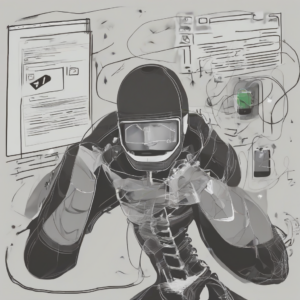Hazard Insurance: Understanding How it Works with Your Mortgage
Hazard insurance, also known as property insurance, is a crucial component of homeownership, especially when you have a mortgage. It provides financial protection against unexpected events that could damage or destroy your home, safeguarding both you and your lender’s investment.
Understanding Hazard Insurance
- Purpose: Hazard insurance protects your home from various risks, such as fire, theft, windstorms, hail, earthquakes, and other natural disasters. It covers the costs of repairing or rebuilding your home in case of such events.
- Coverage: The specific perils covered by hazard insurance vary depending on your insurance policy and location. However, most standard policies include coverage for:
- Dwelling: Coverage for the physical structure of your home, including attached structures like garages and porches.
- Personal Property: Coverage for your belongings inside the home, such as furniture, appliances, clothing, and electronics.
- Liability: Protection against legal claims if someone is injured on your property.
- Additional Living Expenses (ALE): Coverage for temporary housing, food, and other expenses if you are unable to live in your home due to damage.
- Premiums: Hazard insurance premiums are calculated based on various factors, including:
- Location: Areas prone to natural disasters or high crime rates typically have higher premiums.
- Property Value: The higher the value of your home, the higher the premium.
- Coverage Amount: The amount of coverage you choose impacts your premium.
- Deductible: The amount you pay out-of-pocket before your insurance kicks in. A higher deductible generally results in lower premiums.
- Risk Factors: Factors like the age of your home, its condition, and the presence of safety features can also affect your premiums.
The Connection Between Hazard Insurance and Mortgages
Hazard insurance is typically a requirement for homeowners with a mortgage. Lenders insist on it because it protects their investment in your property. If your home is damaged or destroyed, the lender wants to be assured that you have the means to rebuild or repair it, ensuring they can recoup their loan.
Why Mortgage Lenders Require Hazard Insurance
- Collateral Protection: The lender’s loan is secured by your property. Hazard insurance safeguards their collateral, ensuring they can recover their investment in case of a covered loss.
- Loan Default Prevention: Without hazard insurance, a significant event could leave you unable to repay your mortgage, potentially leading to default. Hazard insurance helps prevent this by providing funds for repairs or rebuilding, allowing you to continue making payments.
- Market Value Preservation: By protecting your home from damage, hazard insurance helps preserve its market value, benefiting both you and the lender.
How Hazard Insurance Works with Your Mortgage
- Escrow Account: When you obtain a mortgage, the lender usually requires you to pay your hazard insurance premiums through an escrow account. This means you make monthly payments to the lender, who then pays your insurance premiums directly to your insurer.
- Insurance Coverage: The lender will typically require you to maintain a specific level of coverage, usually at least the amount of your mortgage. This ensures adequate protection for their investment.
- Policy Requirements: Lenders may have specific requirements for your hazard insurance policy, such as naming the lender as a loss payee. This ensures the lender receives a portion of any insurance proceeds in case of a claim.
- Policy Changes: You must notify your lender if you make any changes to your hazard insurance policy, such as increasing or decreasing coverage, changing insurers, or canceling the policy altogether. They need to approve any changes to ensure their interests are protected.
What Happens If You Don’t Have Hazard Insurance
Failing to maintain hazard insurance when required by your mortgage lender can have serious consequences. It is a breach of your mortgage contract and can lead to:
- Mortgage Default: The lender can consider your failure to maintain insurance as a default on your loan, potentially leading to foreclosure.
- Forced Placement: If you fail to provide proof of insurance, the lender may purchase a hazard insurance policy for you, but at a higher cost that they will add to your mortgage balance.
- Loss of Coverage: You will be responsible for any damage or losses to your home if you do not have insurance, leaving you financially vulnerable.
Tips for Managing Your Hazard Insurance
- Shop Around: Get quotes from multiple insurers to compare rates and coverage options. Don’t automatically renew with your current insurer, as you may be able to find a better deal elsewhere.
- Review Your Policy: Regularly review your insurance policy to ensure it still meets your needs. Consider updating coverage based on changes in your property value, belongings, or the risk profile of your area.
- Consider Discounts: Ask your insurer about available discounts, such as those for having security systems, smoke detectors, or energy-efficient features in your home.
- Pay Your Premiums on Time: Failure to pay your premiums can lead to policy cancellation, leaving you unprotected. Set up automatic payments or reminders to avoid missed payments.
Conclusion
Hazard insurance is an essential part of homeownership, particularly when you have a mortgage. By understanding its purpose, coverage, and requirements, you can protect yourself and your lender from financial hardship in case of unexpected events. Remember to keep your policy up-to-date, shop around for competitive rates, and maintain good communication with your lender to ensure you are fully covered and in compliance with your mortgage agreement.





